Exploring the Diverse Varieties of Ginger: A Comprehensive Guide
Ginger is a popular spice with a pungent, spicy flavor and a wide range of health benefits. Originating from Southeast Asia, ginger has been used in cooking and traditional medicine for thousands of years. This guide will introduce you to the different types of ginger, their unique qualities, and how you can use them in your everyday life.
Table of Contents
- What is Ginger?
- Health Benefits of Ginger
- Culinary Uses of Ginger
- Common Varieties of Ginger
- Exotic and Lesser-Known Varieties
- Growing and Harvesting Ginger
- Buying and Storing Ginger
- Frequently Asked Questions (FAQs)
1. What is Ginger?
Ginger is a flowering plant belonging to the Zingiberaceae family. Its rhizome (underground part of the stem) is commonly used as a spice and has a strong, spicy flavor. The plant is believed to have originated in Southeast Asia and has been a staple in both culinary and medicinal practices around the world.
2. Health Benefits of Ginger
Ginger is packed with bioactive compounds and nutrients that offer numerous health benefits. Here are some of the key benefits:
- Reduces Inflammation: Ginger contains gingerol, a substance with powerful anti-inflammatory and antioxidant properties.
- Aids Digestion: Ginger helps speed up the emptying of the stomach, which can be beneficial for people with indigestion and related stomach discomfort.
- Eases Nausea: Ginger is highly effective against nausea, especially morning sickness during pregnancy.
- Lowers Blood Sugar: Some studies suggest that ginger can help lower blood sugar levels and improve heart disease risk factors.
- Relieves Pain: Ginger has been shown to be effective against menstrual pain and osteoarthritis pain.
3. Culinary Uses of Ginger
Ginger is incredibly versatile and used in a variety of dishes around the world. Here are some popular ways to use ginger:
- Ginger Tea: Fresh ginger slices steeped in hot water make a soothing tea.
- Stir-fries: Add sliced or grated ginger to stir-fried vegetables and meats for a spicy kick.
- Baked Goods: Ground ginger is a key ingredient in gingerbread cookies, cakes, and other desserts.
- Marinades: Use ginger in marinades for meats to add flavor and tenderize the meat.
- Soups and Stews: Ginger adds warmth and depth to soups and stews, such as chicken soup or curry.
4. Common Varieties of Ginger
4.1 Common Ginger (Zingiber officinale)
Common Ginger (Zingiber officinale) is the most widely known and used variety of ginger. Originating from Southeast Asia, this type of ginger is characterized by its pungent, spicy flavor and distinctive aroma. It has a knobby, beige-brown rhizome (root) with yellowish flesh, and is commonly used in both culinary and medicinal applications worldwide. Known for its digestive and anti-inflammatory properties, common ginger is a staple in many kitchens, used fresh, dried, or ground to add flavor to a variety of dishes, teas, and herbal remedies.
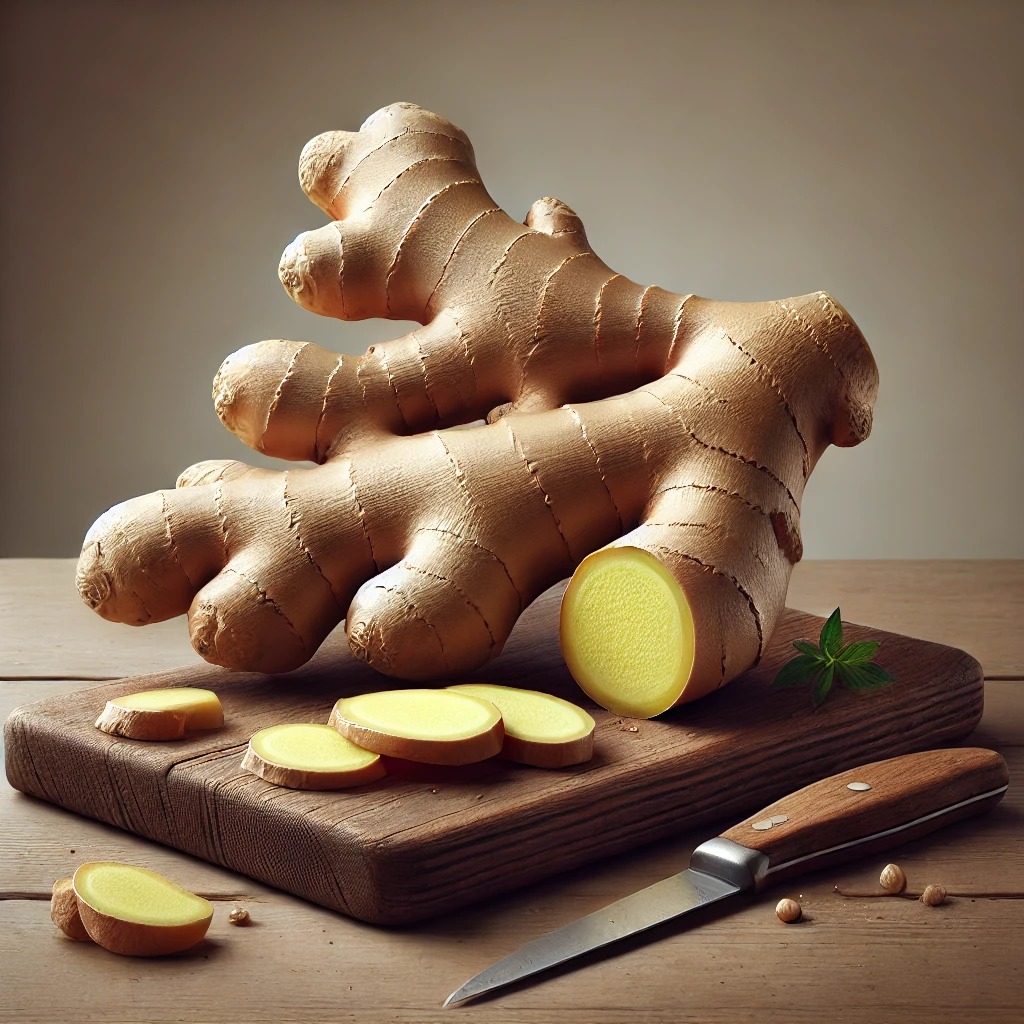
- Description: This is the most widely used type of ginger, known for its strong, spicy flavor and fibrous texture.
- Appearance: Pale yellow to tan skin with light brown flesh.
- Location: Grown best in Southeast Asia, India, and Africa.
- Ideal Weather: Tropical and subtropical climates.
- Ideal Season: Plant in spring.
- Ideal Temperature: 75-85°F (24-29°C).
- Uses: Commonly used in cooking, baking, and tea. It is also used in traditional medicine.
4.2 Japanese Ginger (Myoga)
Japanese Ginger, also known as Myoga (Zingiber mioga), is a unique variety of ginger prized in Japanese cuisine for its edible flower buds and shoots rather than its root. Myoga is known for its delicate, mildly spicy flavor and aromatic quality, making it a popular addition to dishes such as sushi, soups, and salads. Unlike common ginger, Myoga is often enjoyed fresh and adds a distinctive touch to many traditional Japanese recipes. This ginger variety is not only flavorful but also packed with health benefits, including digestive aid and anti-inflammatory properties.

- Description: Japanese ginger, also known as Myoga, has a milder flavor and is known for its edible flower buds and shoots.
- Appearance: Pale pink to light green shoots.
- Location: Grown best in Japan and Korea.
- Ideal Weather: Cool, temperate climates.
- Ideal Season: Plant in late spring.
- Ideal Temperature: 60-70°F (15-21°C).
- Uses: Often used in Japanese cuisine, especially in salads, pickles, and as a garnish.
4.3 Mango Ginger (Curcuma amada)
Mango Ginger, also known as Curcuma amada, is a unique variety of ginger that closely resembles mango in aroma and flavor. Unlike common ginger, Mango Ginger has a milder taste with a distinct fruity twist, making it a popular ingredient in pickles, chutneys, and culinary dishes in India and Southeast Asia. Its rhizomes are not only prized for their delightful flavor but also for their medicinal properties, including anti-inflammatory and digestive benefits. This exotic ginger variety is a valuable addition to both kitchens and herbal medicine cabinets.

- Description: Mango Ginger, or Curcuma amada, combines the essence of ginger with a hint of mango, offering a mild, fruity flavor.
- Appearance: Smaller rhizomes with pale yellow to creamy white flesh and smooth, light brown skin.
- Location: Grown primarily in India and Southeast Asia.
- Ideal Weather: Thrives in warm, humid climates with consistent rainfall.
- Ideal Season: Planted early monsoon, harvested in 8-10 months.
- Ideal Temperature: Best at 75-85°F (24-29°C).
- Uses: Popular in Indian cuisine for pickles and chutneys, and valued in Ayurvedic medicine for digestive and anti-inflammatory benefits.
4.4 Blue Ginger (Dichorisandra thyrsiflora)
Blue Ginger, scientifically known as Dichorisandra thyrsiflora, is a stunning ornamental plant native to Brazil. Despite its name, it is not a true ginger but belongs to the Commelinaceae family. This plant is prized for its vibrant blue flowers that bloom on tall spikes, adding a splash of color to gardens and landscapes. Blue Ginger thrives in tropical and subtropical climates and prefers partial shade and well-drained soil. It’s an excellent choice for gardeners looking to add a touch of exotic beauty to their outdoor spaces.

- Description: Also known as blue ginger, it is more ornamental and less commonly used in cooking.
- Appearance: Blue flowers with dark green leaves.
- Location: Grown best in tropical regions.
- Ideal Weather: Warm, humid climates.
- Ideal Season: Plant in spring.
- Ideal Temperature: 70-85°F (21-29°C).
- Uses: Mostly grown for its attractive blue flowers.
4.5 Sand Ginger (Kaempferia galanga)
Sand Ginger, scientifically known as Kaempferia galanga, is a unique and aromatic type of ginger. Native to Southeast Asia, this plant is valued for its rhizomes, which are used in traditional medicine and culinary applications. The rhizomes are known for their distinctive camphor-like aroma and peppery flavor, making them a popular ingredient in various Asian dishes and herbal remedies. Sand Ginger is also known for its anti-inflammatory and antimicrobial properties, which contribute to its widespread use in natural medicine.

- Description: Sand ginger has a peppery flavor and is commonly used in Asian cuisine.
- Appearance: Light brown skin with white flesh.
- Location: Grown best in Southeast Asia.
- Ideal Weather: Tropical climates.
- Ideal Season: Plant in spring.
- Ideal Temperature: 75-85°F (24-29°C).
- Uses: Used in traditional medicine and for flavoring dishes.
5. Exotic and Lesser-Known Varieties
5.1 Torch Ginger (Etlingera elatior)
Torch Ginger, scientifically known as Etlingera elatior, is a strikingly beautiful and exotic tropical plant. Known for its tall, torch-like inflorescences that come in vibrant shades of red, pink, or white, this ginger variety is often used as an ornamental plant in gardens and floral arrangements. Originating from Southeast Asia, Torch Ginger thrives in warm, humid climates and is also appreciated for its culinary uses, particularly in Thai and Malaysian cuisine, where the flower buds and young shoots are used to add a unique, tangy flavor to dishes.

- Description: Torch ginger has a floral flavor and is known for its beautiful, torch-like flowers.
- Appearance: Bright red to pink torch-shaped flowers.
- Location: Grown best in Southeast Asia.
- Ideal Weather: Tropical climates.
- Ideal Season: Plant in spring.
- Ideal Temperature: 75-85°F (24-29°C).
- Uses: Commonly used in Southeast Asian dishes, salads, and curries.
5.2 Bitter Ginger (Zingiber zerumbet)
Bitter Ginger, also known as Zingiber zerumbet, is a tropical plant native to Southeast Asia. It is renowned for its distinctive, knobby rhizomes that produce a spicy, aromatic flavor. This variety of ginger is often used in traditional medicine and culinary applications, particularly for its anti-inflammatory and digestive properties. Bitter Ginger is also popular in the beauty industry, where its extracts are used in shampoos and skincare products due to its soothing and moisturizing benefits. The plant features attractive, cone-shaped flower heads, making it a popular choice for ornamental gardening as well.

- Description: Bitter ginger has a bitter taste and is often used in traditional medicine.
- Appearance: Green stems with cone-shaped inflorescences.
- Location: Grown best in Hawaii, Southeast Asia, and the Pacific Islands.
- Ideal Weather: Tropical climates.
- Ideal Season: Plant in spring.
- Ideal Temperature: 75-85°F (24-29°C).
- Uses: Used in medicinal preparations and sometimes in cooking.
5.3 Thai Ginger (Galangal)
Thai Ginger, commonly known as Galangal, is a unique and aromatic spice widely used in Southeast Asian cuisine. Unlike common ginger, Galangal has a sharper, more peppery flavor with hints of citrus and pine, adding a distinct taste to dishes. It is a key ingredient in Thai soups, curries, and stir-fries, and also boasts medicinal properties, making it a versatile and valuable addition to both culinary and health practices.

- Description: Thai ginger, also known as galangal, has a citrusy flavor and is a key ingredient in Thai cuisine.
- Appearance: Light brown skin with white to pinkish flesh.
- Location: Grown best in Southeast Asia.
- Ideal Weather: Tropical climates.
- Ideal Season: Plant in spring.
- Ideal Temperature: 75-85°F (24-29°C).
- Uses: Essential in Thai soups, curries, and sauces.
5.4 Black Ginger (Kaempferia parviflora)
Black Ginger, scientifically known as Kaempferia parviflora, is a unique and exotic variety of ginger native to Thailand. It is renowned for its dark purple to black rhizomes and is often referred to as “Thai Ginseng” due to its numerous health benefits. Black Ginger has been traditionally used in Thai medicine for its potential to boost energy, improve circulation, and enhance sexual health. This versatile root is not only prized for its medicinal properties but also for its distinctive flavor, making it a valuable addition to both culinary and therapeutic practices.
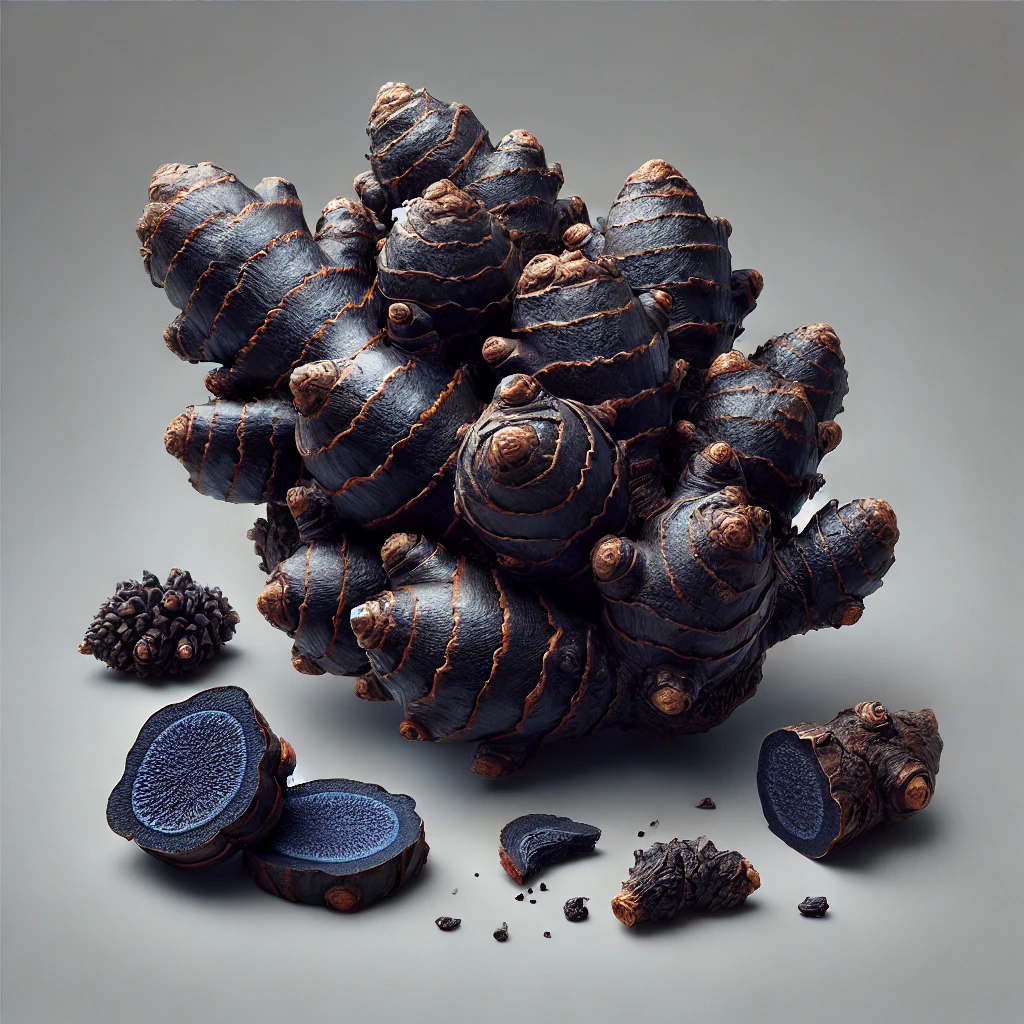
- Description: Black ginger is known for its dark color and medicinal properties.
- Appearance: Dark purple to black rhizomes.
- Location: Grown best in Thailand.
- Ideal Weather: Tropical climates.
- Ideal Season: Plant in spring.
- Ideal Temperature: 75-85°F (24-29°C).
- Uses: Used in traditional medicine and sometimes in culinary applications.
5.5 White Ginger (Zingiber mioga)
White Ginger, scientifically known as Zingiber mioga, is a unique variety of ginger native to Japan and China. Unlike common ginger, it is valued primarily for its edible flower buds and shoots, which have a delicate, slightly spicy flavor. White Ginger is often used in Japanese cuisine, adding a fresh, aromatic touch to dishes like sushi and salads. This variety thrives in shaded, moist environments, making it a distinctive and versatile addition to both culinary and ornamental gardens.

- Description: White ginger is used in Japanese cuisine and has a mild flavor.
- Appearance: Pale yellow to white shoots and flowers.
- Location: Grown best in Japan and Korea.
- Ideal Weather: Cool, temperate climates.
- Ideal Season: Plant in late spring.
- Ideal Temperature: 60-70°F (15-21°C).
- Uses: Commonly used in pickles, salads, and as a garnish.
5.6 Yellow Ginger (Zingiber montanum)
Yellow Ginger, also known as Zingiber montanum, is a robust variety of ginger native to Southeast Asia. It is characterized by its vibrant yellow rhizomes and distinctive, slightly spicy aroma. This type of ginger is often used in traditional medicine and culinary dishes for its anti-inflammatory and digestive benefits. The rhizomes are commonly utilized fresh, dried, or powdered, adding a unique flavor to various recipes.

- Description: Yellow ginger is used in both cooking and traditional medicine.
- Appearance: Yellow skin with bright yellow flesh.
- Location: Grown best in Southeast Asia.
- Ideal Weather: Tropical climates.
- Ideal Season: Plant in spring.
- Ideal Temperature: 75-85°F (24-29°C).
- Uses: Adds flavor to dishes and is used in herbal remedies.
5.7 Red Ginger (Alpinia purpurata)
Red Ginger (Alpinia purpurata), also known as Ostrich Plume or Jungle King, is a striking ornamental plant native to the Pacific Islands. Known for its vibrant red bracts and lush green foliage, Red Ginger adds a tropical flair to gardens and landscapes. This plant thrives in warm, humid climates and is often used for decorative purposes due to its eye-catching appearance and long-lasting flowers.
Would you like more detailed information or additional content about Red Ginger?
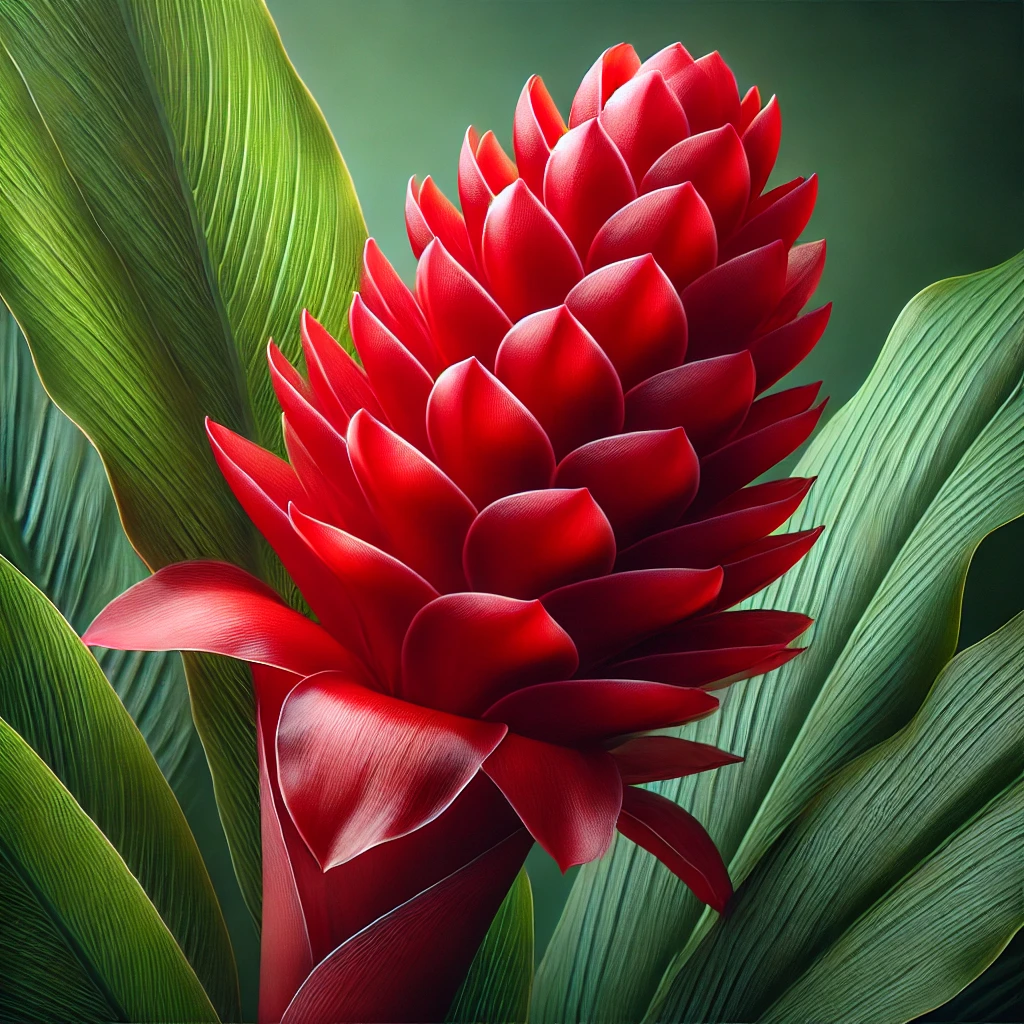
- Description: Red ginger is mostly grown for its striking red flowers.
- Appearance: Bright red flower spikes.
- Location: Grown best in tropical regions.
- Ideal Weather: Tropical climates.
- Ideal Season: Plant in spring.
- Ideal Temperature: 75-85°F (24-29°C).
- Uses: Used as an ornamental plant and sometimes in cooking.
5.8 Pink Ginger (Etlingera elatior)
Pink Ginger, scientifically known as Etlingera elatior, is a striking ornamental plant renowned for its vibrant, torch-like inflorescence. Native to Southeast Asia, this species is highly valued both for its aesthetic appeal and its culinary uses. The tall, robust stems produce large, waxy pink bracts that form a cone-shaped flower, which is often used in floral arrangements and as a decorative element in tropical gardens. In addition to its visual appeal, Pink Ginger is utilized in various Asian cuisines, where the young shoots and flower buds are incorporated into salads and curries for their unique flavor and texture. This plant thrives in warm, humid climates, preferring well-drained, fertile soil and partial to full sunlight, making it a popular choice in tropical and subtropical regions.
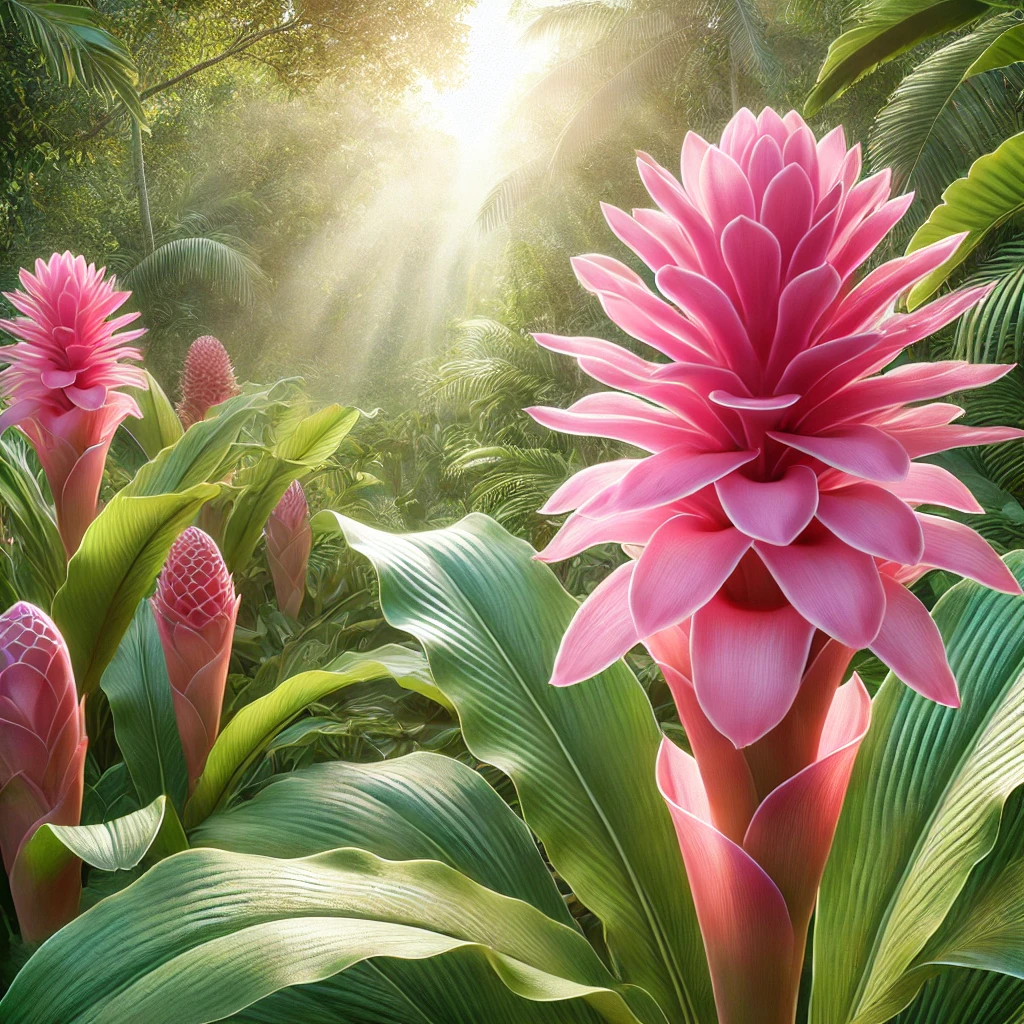
- Description: Pink ginger is known for its sweet flavor and vibrant pink flowers.
- Appearance: Pink flower spikes.
- Location: Grown best in Southeast Asia.
- Ideal Weather: Tropical climates.
- Ideal Season: Plant in spring.
- Ideal Temperature: 75-85°F (24-29°C).
- Uses: Often used in salads and garnishes.
5.9 Chinese Ginger (Zingiber striolatum)
Chinese Ginger, scientifically known as Zingiber striolatum, is a lesser-known but valuable variety of ginger. This ginger species is native to China and is celebrated for its unique medicinal properties and culinary uses. The rhizomes are slender and aromatic, with a flavor profile that is both pungent and slightly sweet, making it an excellent addition to traditional Chinese dishes and herbal remedies. Known for its anti-inflammatory and digestive benefits, Chinese Ginger is a versatile and beneficial plant that adds both flavor and health benefits to any diet.

- Description: Chinese ginger has a distinct flavor and is used in traditional Chinese medicine.
- Appearance: Light brown skin with white flesh.
- Location: Grown best in China and Southeast Asia.
- Ideal Weather: Subtropical to tropical climates.
- Ideal Season: Plant in spring.
- Ideal Temperature: 70-80°F (21-27°C).
- Uses: Used in medicinal preparations and sometimes in culinary applications.
5.10 Wild Ginger (Asarum canadense)
Wild Ginger, scientifically known as Asarum canadense, is a native North American plant that thrives in shaded, woodland environments. Unlike the common ginger used in culinary practices, Wild Ginger is prized for its ornamental value and distinctive, heart-shaped leaves. The plant produces small, bell-shaped flowers hidden beneath its foliage, adding to its unique charm. Wild Ginger is also valued in traditional medicine for its aromatic roots, which were historically used by Indigenous peoples for various medicinal purposes.
This shade-loving perennial is an excellent ground cover for woodland gardens, providing a lush, green carpet and enhancing biodiversity.

- Description: Wild ginger is native to North America and has a strong, spicy flavor.
- Appearance: Heart-shaped leaves with brownish-purple flowers.
- Location: Grown best in North America.
- Ideal Weather: Temperate climates.
- Ideal Season: Plant in spring.
- Ideal Temperature: 60-70°F (15-21°C).
- Uses: Used in traditional medicine and cooking.
5.11 Butterfly Ginger (Hedychium coronarium)
Butterfly Ginger (Hedychium coronarium) is a captivating plant known for its fragrant, white, butterfly-like flowers. Native to the Himalayan region, it thrives in warm, tropical climates and can be found in gardens across the world. Besides its ornamental appeal, Butterfly Ginger also holds traditional medicinal value in various cultures.

- Description: Butterfly ginger is known for its fragrant white flowers.
- Appearance: White, butterfly-shaped flowers.
- Location: Grown best in tropical and subtropical regions.
- Ideal Weather: Warm, humid climates.
- Ideal Season: Plant in spring.
- Ideal Temperature: 70-85°F (21-29°C).
- Uses: Mostly ornamental, but the flowers can be used in perfumes.
5.12 Peacock Ginger (Kaempferia pulchra)
Peacock Ginger, scientifically known as Kaempferia pulchra, is a strikingly beautiful plant native to Southeast Asia. It is renowned for its ornamental foliage, featuring broad, dark green leaves with intricate silver patterns, resembling a peacock’s plumage. Beyond its visual appeal, Peacock Ginger also produces delicate, lavender-colored flowers, adding to its charm. This ginger variety thrives in warm, humid climates and is often used in shaded garden beds and container gardening, making it a favorite among gardeners and plant enthusiasts.

- Description: Peacock ginger is grown for its attractive leaves and flowers.
- Appearance: Green and purple leaves with pink flowers.
- Location: Grown best in Southeast Asia.
- Ideal Weather: Tropical climates.
- Ideal Season: Plant in spring.
- Ideal Temperature: 75-85°F (24-29°C).
- Uses: Used in traditional medicine and as an ornamental plant.
5.13 Pineapple Ginger (Tapeinochilos ananassae)
Pineapple Ginger, scientifically known as Tapeinochilos ananassae, is a striking tropical plant native to Papua New Guinea and Indonesia. It is named for its vibrant, pineapple-like inflorescence, which consists of red bracts and yellow flowers, making it a popular choice for ornamental gardens. This plant thrives in warm, humid climates and is often grown for its unique and exotic appearance, adding a touch of tropical beauty to any landscape.
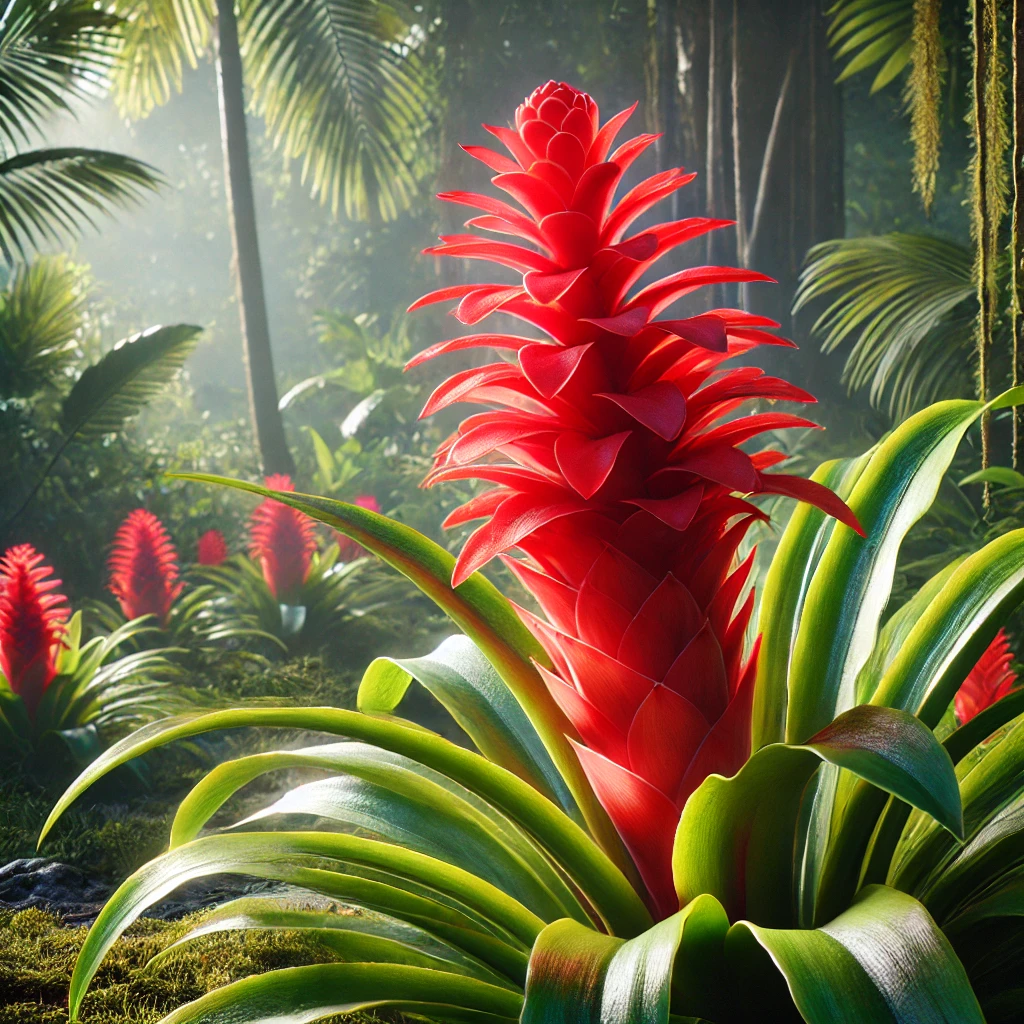
- Description: Pineapple ginger has a fruity flavor and is known for its pineapple-like flowers.
- Appearance: Bright red flower spikes resembling a pineapple.
- Location: Grown best in tropical regions.
- Ideal Weather: Tropical climates.
- Ideal Season: Plant in spring.
- Ideal Temperature: 75-85°F (24-29°C).
- Uses: Used in tropical dishes and as an ornamental plant.
5.14 Shampoo Ginger (Zingiber zerumbet)
Shampoo Ginger, also known as Zingiber zerumbet, is a fascinating and versatile variety of ginger native to Southeast Asia. This plant is renowned for its unique appearance, with cone-shaped flower bracts that turn a vibrant red when mature. The bracts contain a fragrant liquid that is traditionally used as a natural shampoo and conditioner, giving the plant its common name. Beyond its cosmetic uses, Shampoo Ginger also has culinary and medicinal applications, making it a valuable addition to both gardens and households.
Shampoo Ginger thrives in warm, tropical climates and prefers well-drained soil with partial to full sunlight. It is a hardy plant that can add both aesthetic beauty and practical benefits to your garden.

- Description: Shampoo ginger is known for its fresh scent and is used in hair care products.
- Appearance: Green stems with pinecone-like inflorescences that turn red.
- Location: Grown best in Hawaii, Southeast Asia, and the Pacific Islands.
- Ideal Weather: Tropical climates.
- Ideal Season: Plant in spring.
- Ideal Temperature: 75-85°F (24-29°C).
- Uses: Used in shampoos and sometimes in cooking.
5.15 Cardamom Ginger (Elettaria cardamomum)
Cardamom Ginger (Elettaria cardamomum) is a unique variety known for its aromatic qualities and dual purpose as both a spice and medicinal herb. Native to the lush forests of Southern India, it produces small, fragrant pods that are used in a variety of culinary dishes and traditional medicine. This ginger variety thrives in tropical climates and is prized for its distinct, warm flavor and health benefits, including digestive aid and anti-inflammatory properties.
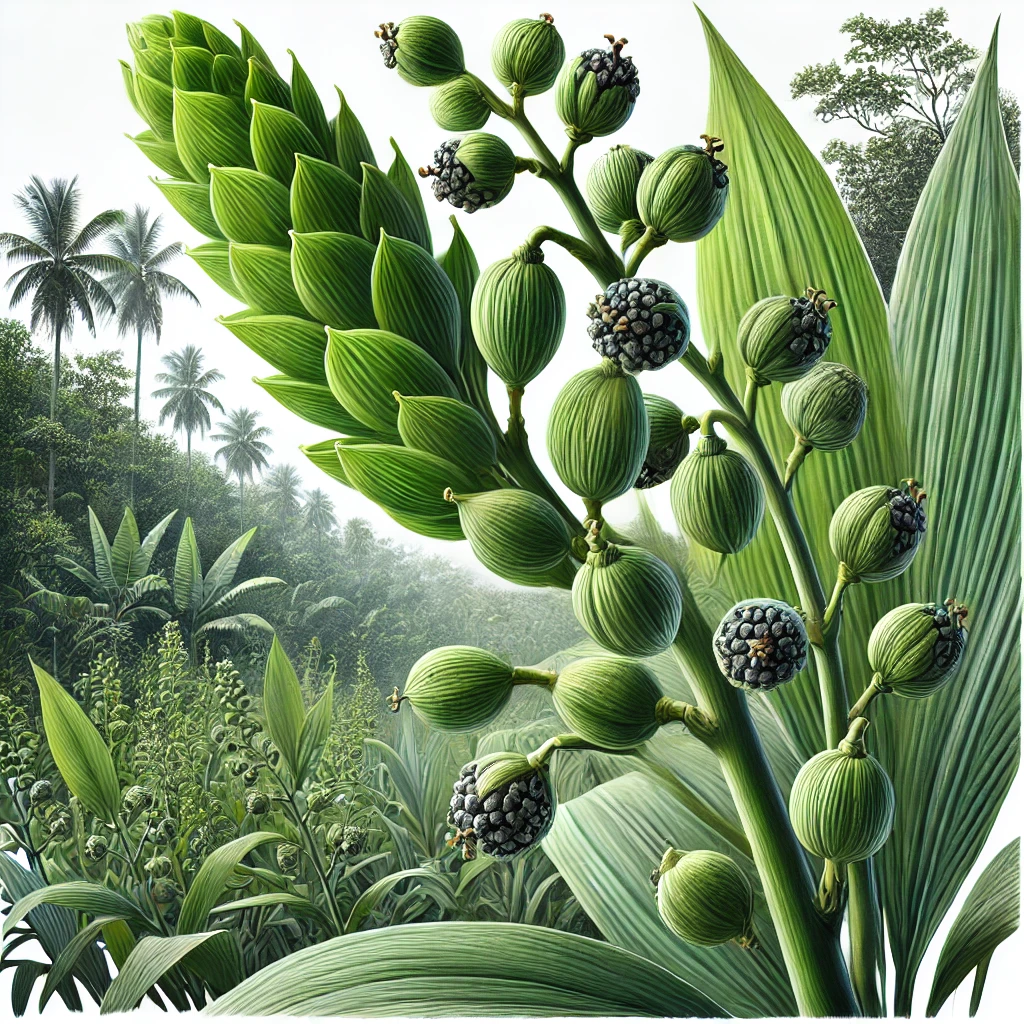
- Description: Cardamom ginger has a sweet, spicy flavor and is used in both culinary and medicinal applications.
- Appearance: Light green pods containing small black seeds.
- Location: Grown best in India and Southeast Asia.
- Ideal Weather: Tropical and subtropical climates.
- Ideal Season: Plant in spring.
- Ideal Temperature: 75-85°F (24-29°C).
- Uses: Commonly used in desserts and herbal remedies.
6. Growing and Harvesting Ginger
Growing ginger at home is relatively easy. Follow these steps:
- Planting: Plant ginger roots (rhizomes) in well-drained soil. Ensure the soil is rich in organic matter.
- Watering: Water the plants regularly, keeping the soil moist but not waterlogged.
- Sunlight: Place the ginger in a warm, sunny spot, ideally with some partial shade.
- Harvesting: Ginger can be harvested after 8-10 months when the plant’s leaves start to yellow and die back. Carefully dig up the rhizomes, clean them, and store them in a cool, dry place.
7. Buying and Storing Ginger
- Selecting Ginger: When buying fresh ginger, look for firm, smooth roots with no signs of mold or shriveling. The skin should be thin and easy to scrape with a fingernail.
- Storing Ginger: Fresh ginger can be stored in the refrigerator for up to three weeks. For longer storage, you can freeze ginger or store it in a cool, dark place. Pickled ginger can last several months in the refrigerator.
8. Frequently Asked Questions (FAQs)
Q: Can I grow ginger indoors?
A: Yes, ginger can be grown indoors in a pot. Ensure it gets plenty of light and water.
Q: How do I use ginger in tea?
A: Slice fresh ginger and steep it in hot water for 5-10 minutes. Add honey or lemon for extra flavor.
Q: Is ginger good for colds?
A: Yes, ginger can help soothe a sore throat, reduce inflammation, and boost the immune system.
Q: Can ginger help with weight loss?
A: Ginger can boost metabolism and reduce appetite, which may help with weight loss.
Q: How do I peel ginger?
A: Use a spoon to scrape off the skin of the ginger root. This method preserves more of the ginger compared to using a knife.
For more Questions like that, Visit this Page
Conclusion
Ginger is a versatile spice with many varieties, each offering unique flavors and benefits. Whether you’re using it in cooking, brewing tea, or for its health benefits, there’s a type of ginger for everyone to enjoy.
Call to Action
Have you tried different types of ginger? Share your experiences in the comments below! Don’t forget to subscribe to our blog for more interesting articles.
common ginger (Zingiber officinale), yellow ginger (Curcuma longa), Japanese ginger (Zingiber mioga), white ginger (Zingiber officinale var. Roscoe), turmeric ginger (Curcuma longa), blue Hawaiian ginger (Alpinia galanga), shell ginger (Alpinia zerumbet), butterfly ginger (Hedychium coronarium), krachai (Boesenbergia rotunda), Thai ginger (Alpinia galanga), red ginger (Alpinia purpurata), Kahili ginger (Hedychium gardnerianum), pink ginger (Zingiber zerumbet), Chinese ginger (Zingiber officinale), mango ginger (Curcuma amada), bitter ginger (Zingiber zerumbet), aromatic ginger (Kaempferia galanga), cardamom ginger (Elettaria cardamomum), wild ginger (Asarum canadense), sand ginger (Kaempferia galanga). easy to grow, ginger lily, ginger plant, candied ginger, ginger species varieties, ginger types, ginger varieties, ginger variety, types ginger, types of ginger, types of ginger root, varieties of ginger



